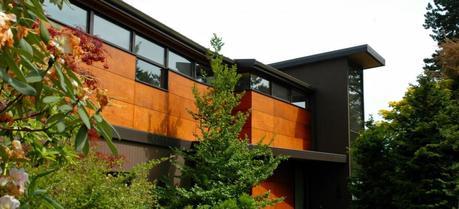 Modern house of contemporary design, glass and wood, Washington Park neighborhood, Seattle, Washington, USA. (Credit: Flickr @ Wonderlane http://www.flickr.com/photos/wonderlane/)
Modern house of contemporary design, glass and wood, Washington Park neighborhood, Seattle, Washington, USA. (Credit: Flickr @ Wonderlane http://www.flickr.com/photos/wonderlane/)According to EIA’s most recent Residential Energy Consumption Survey (RECS), newer homes built in the U.S. are significantly more energy efficient than those build before 2000. The homes that were built after 2000, consume about the same amount of energy despite being, on average, 30% larger.
The newer houses consumed 21% less energy for space heating even though they are significantly larger than older homes on average. The improvement was largely attributed to better heating systems technology and more efficient building construction as a result of more stringent energy codes. Space heating is the only category of household energy consumption that saw a net drop from older to newer homes.
The relatively smaller energy demand for heating can also be attributed to the fact that a disproportionate number of newer homes have been built in the south in places like Texas. This geographic trend towards Texas and the southern states resulted in increased energy usage for air conditioning.

(Credit: U.S. Energy Information Administration, Residential Energy Consumption Survey).
Even with better air conditioning technology and improved housing construction energy efficiency standards, average household energy consumption for air conditioning is 56% higher in newer homes. Adding to the increase in energy for air conditioning was the fact that newer homes tended to be larger, newer homes are more likely to have central air than older homes, and the fact that newer homes are more likely to be in hotter parts of the country.
While natural gas is often then fuel of choice for heating, especially in northern states, electricity powers air conditioning. Even with more energy efficient air conditioning units, the increase in electricity demand has put a strain on the U.S. electricity infrastructure.
This article was originally posted on Vault Energy Solutions.

